A little more uncomfortable than the previous ones, this year’s location of the 15. Biennale de Lyon Les Usines Fagor, a former washing machine factory, lends itself with its large spaces to give the works the right breath. 30,000 square meters of surface divided into 4 Halles. But not only. The director and the curators intended to put the artists in a dialogue with the post-industrial atmosphere and they created site-specific works in the most proper sense of the term. Beginning with what was an office located at the entrance, the collective Bureau des Pleurs sets up the site as a space for reflection on the end of the factory and the creation of unemployed. Jean Marie Appriou creates with aluminum an intricate forest of brambles that invade the space by inserting nature into the realm of technology. Celebrate the past with a strange washing machine covered with pink silk produced by the Vedette of the Fagor group and the Chantal Thomas, the first washing machine with underwear on the outside.
Nico Vascellari in Horse Power thinks about the myths and rituals related to the energy present in nature as opposed to the technological conception of the horsepower as a unit of measurement of engine power. A series of animals slumped over engines. Fermando Palma Rodriguez, a Mexican engineer, sets up an amazing up and down of doll clothes that are suspended in the air, bobbing in mid-air or collapse to the ground. In an electronic world, fairy tales, dolls and magic are also robotized. Elastic Bonding by Malin Bulow is made of clothes in elastic fabric that covers the mannequins or the performers themselves and from the head they reach the large windows of the ceiling from which the light rains, thus integrating with the architecture thus creating a man prisoner. Halfway between a dense archaeological site of menhirs and a forest with cut trees flooded by a metallic rain, Bronwyn Katz‘s work must be crossed with religious attention.
With epoxy resin, steel and wax Rebecca Ackroyd creates a post mortem world with fragments of bodies, rickety chairs, enclosed in a space outlined only by porthole windows. Desolate the huge snowy landscape with only an abandoned motocross bike: Le silence d’une dune by Stephane Thidet. La Melée by Leonard Martin is an inflatable work that reaches its peak with superimposed animal shapes and riders and then collapses. Work and despair are represented by Simphiwe Ndzube, South African, with Journey to Asszi, dummies deformed by fatigue beyond a net made of poles with boots, gloves and umbrellas.
In the second Halle the Korean Minouk Lim’s artwork: Si tu me vois, je ne te vois pas is inspired by the tragedies that have devastated his country. A phosphorescent water channel crossed by a traditional Korean costume. A huge spot of soap (Bouilleur de savon by Nicolas Momein) takes up most of the space by drawing a yellowish form that may have to do with pollution as with any natural disaster. Sometimes the artists act by completely reinventing the space as in the case of Ashley Hans Scheirl and Jakob Lena Knel who, with a disruptive irony, make their home a section of space by painting the structures in violet, covering them with wallpaper, installing lamps, cabinets, sculptures. Industry becomes the home. With the sofas you sit on willingly, surrounded by bright colors, precisely because you feel at home. That is the same thing that Yona Lee does, in the fourth Halle, which uses the spiral staircase to go up to the structure above where it sets up a bed, a small garden, some tables, a lighting.
In the third Halle Mire Lee, Korean, fits perfectly into the structure with Saboteurs using glycerine, steel, paper, resin that form an amalgam that is reshuffled thanks to peristaltic pumps. A dysfunctional organic machine that could be mistaken for an old machine still in operation since the old days. So also for the strange distillers of Thomas Feuerstein who here however seems to have to reintegrate the liver of the Prometheus delivered to which the sculptural work is dedicated.
Third Halle. Knotworm by Sam Keong is, seen from one side, a giant wheel of some kind of machinery, and on the other, a tunnel or the inside of a washing machine, surrounded by a series of materials between the vegetable and the industrial of various nature. In front of this work, the conditioning tubes by Holly Hendry Deep soil Thrombosis become like arteries from which slag comes out. They are all very large works that would be difficult to locate elsewhere. The Cossovar Halilay takes half of the fourth Halle with the explosion of elements that bring back to the war, the staging that goes back to the traditions taken in the video, stairs, tents, flying beings. In the end it could not be missed an Aerostati Experience by Taus Makhacheva, Russia, who wants to remember the first flight from Lyon in 1784.
Also of interest at the Institute of Contemporary Art is the new edition of the Jeune creation international the choice made by the commissioners of the 15th Biennale who were invited to propose 5 young international artists.
Giulia Cenci creates complex installations as intricate forests in which strange beings hang from vertical structures made using resins and silicones and minerals that give a sense of disturbing viscosity. Also Zsofia Keresztes creates unidentified beings covered with mosaic but with iridescent colors and shapes reminiscent of bodies in gymnastic positions, arms, human organs. Always in the balance between natural and unnatural organic and inorganic Theo Massoulier is interested in entropy and anthropocene and proposes both small shrubs and a table for genetic experiments. Cedric Esturillo starts from the classic sculpture of wood, but still arrives at hybrid results by adding paint, fluorescent tubes, video, and other materials. We then have Sebastian Jefford who plays with shapes, hanging on the walls, incomprehensible precisely because they cannot be traced back to anything known. On the ground we find big keys that perhaps will allow us to read the work. Even in the spaces of Randolpho Lamonier, Brazilian artist from Belo Horizonte, uncertain moves are made even if here the strong presence of elements of protestors bring us back to the real problems of his country and beyond. With neon video photographs takes us to those areas that are defined as marginal: anticapitalist manifestations, bondage, drag queens.
Instead, it is a bit of a dream world that Charlotte Denamur sets up with colored fabrics in shades of blue suspended on the walls like waves floating in the sky, creating a heavenly atmosphere. But it’s just a moment. With Naomi Maury we slip back into a forest of rods starting at 160 feet in ceramic, papier maché, flexible neon, metal and other materials. Here the light is an anomalous fluorescent orange.
Even the huge spaces of the MAC Museum of Contemporary Art are being used as personal megs. All the second and the whole third floor are dedicated to the couple of artists Daniel Dewar and Gregory Giequel. Their works in oak wood, clear, polished, perfect, both hanging on the walls as bas-reliefs and in the wardrobe version in the middle of the floor, show a series of human organs. Abdominals, muscles, hands, fingers, feet, navels. On the cabinet doors, for example, there are large intestines. And then various animals that emerge here and there to reaffirm the concept that we are mammals together with other mammals against the idea of a main species.
The so-called Associated Exhibitions in some canonical places of the city and surroundings enrich the offer of the Biennale. In the atrium of the CIC Bank the work of David Posth-Kohler hangs on to the works mentioned above with three gigantic monuments made of hands, ancient masks, references to the monuments to the fallen as a stele of primordial cults. At the Ballukian Foundation, Andrea Mastrovito rethinks the parquet floor making it a carved wooden Renaissance work with representations that are part of his twisted dreams also featured in a video.
Info:
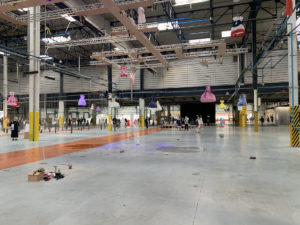 Fermando Palma Rodriguez
Fermando Palma Rodriguez
 Jean Marie Appriou
Jean Marie Appriou
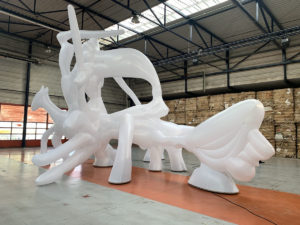 Leonard Martin
Leonard Martin
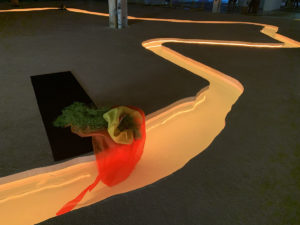 Minouk Lim
Minouk Lim
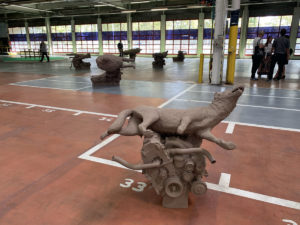 Nico Vascellari
Nico Vascellari
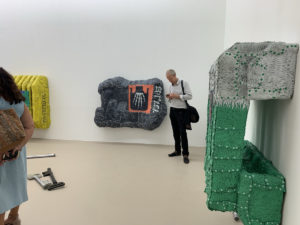 Sebastian Jefford
Sebastian Jefford

Emanuele Magri teaches History of Art in Milan. Since 2007 he has been writing abroad for Juliet art Magazine. Since the 1970s he has dealt with writing and visual arts. He created taxonomically defined worlds, in which he experimented with the self-referentiality of language, such as “La Setta delle S’arte” in which ritual clothes are made starting from words with multiple meanings, the “Treaty of genetic art” in which a series of plants is obtained from grafts of human organs, eyes, hands, mouths, etc., and the project “Fandonia”, a city where everything is double and hybrid.






NO COMMENT